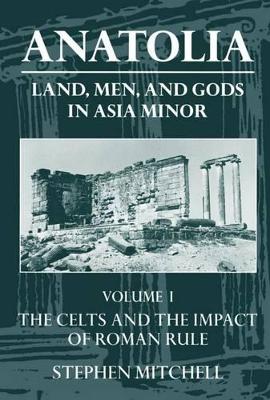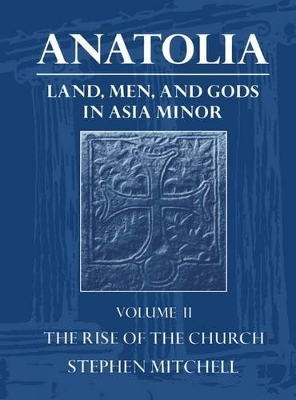Anatolia
2 total works
Anatolia: Volume I: The Celts and the Impact of Roman Rule
by Stephen Mitchell
Published 6 July 1995
This is the first comprehensive study of the history of Asia Minor in antiquity to be written for nearly fifty years and the first attempt to treat Anatolian history as a whole over the millennium from the time of Alexander the Great to the hey day of the Byzantine Empire. The first volume is in two parts. The first examines the region in the Hellenistic period, when it was dominated by Celtic tribes who settled in the interior of Asia Minor in the first half of the
third century BC. The second covers the period of the Roman Empire and looks in detail at the changes brought about by imperial rule. Two relationships dominated every aspect of Asia Minor's history throughout the period: that of the people to the land and that of men to the gods. An enormous
quantity of information derived from written sources, archaeological remains, inscriptions, and coins make it possible to explore these relationships at a level of detail which is hardly possible for any other part of the ancient world. Both themes have a significance which reached far beyond the boundaries of Anatolia.
third century BC. The second covers the period of the Roman Empire and looks in detail at the changes brought about by imperial rule. Two relationships dominated every aspect of Asia Minor's history throughout the period: that of the people to the land and that of men to the gods. An enormous
quantity of information derived from written sources, archaeological remains, inscriptions, and coins make it possible to explore these relationships at a level of detail which is hardly possible for any other part of the ancient world. Both themes have a significance which reached far beyond the boundaries of Anatolia.
This is the first comprehensive study of the history of Asia Minor in antiquity to be written for nearly fifty years and the first attempt to treat Anatolian history as a whole over the millennium from the time of Alexander the Great to tbe hey-day of the Byzantine Empire. This second volume examines the rise of Christianity: Anatolian religious beliefs and practices provides fertile ground where both Jewish and Christian communities set down early roots; by the mid
third century AD much of Anatolia was Christian, and Christian beliefs and practices shaped Anatolian history in Late Antiquity as decisively as the conditions of imperial rule had done in the high Roman Empire.
Two relationships dominated every aspect of Asia Minor's history: that of the people to the land, and that of men to the gods. An enormous quantity of information derived from written sources, archaeological remains, inscriptions and coins make it possible to explore these relationships at a level of detail which is hardly possible for anyother part of the ancient world. Both themes have a significance which reached far beyond the boundaries of Anatolia.
third century AD much of Anatolia was Christian, and Christian beliefs and practices shaped Anatolian history in Late Antiquity as decisively as the conditions of imperial rule had done in the high Roman Empire.
Two relationships dominated every aspect of Asia Minor's history: that of the people to the land, and that of men to the gods. An enormous quantity of information derived from written sources, archaeological remains, inscriptions and coins make it possible to explore these relationships at a level of detail which is hardly possible for anyother part of the ancient world. Both themes have a significance which reached far beyond the boundaries of Anatolia.

